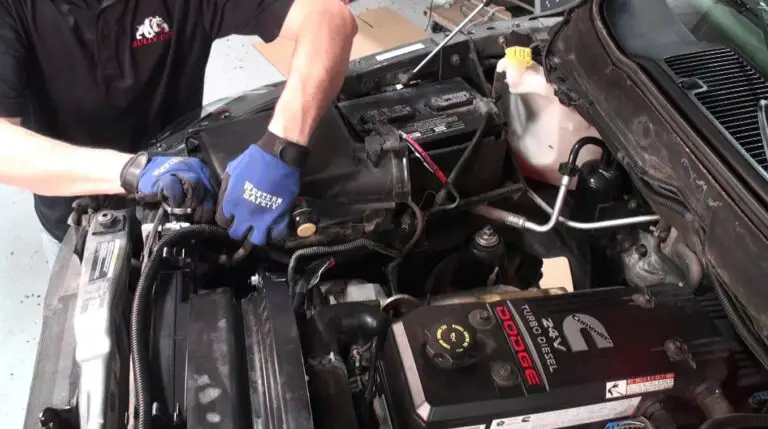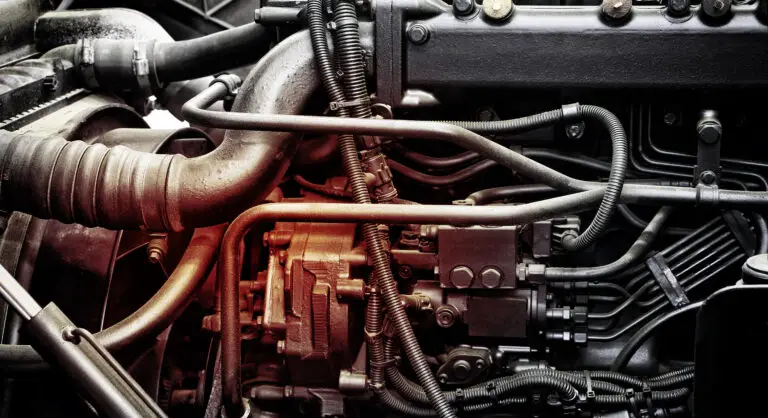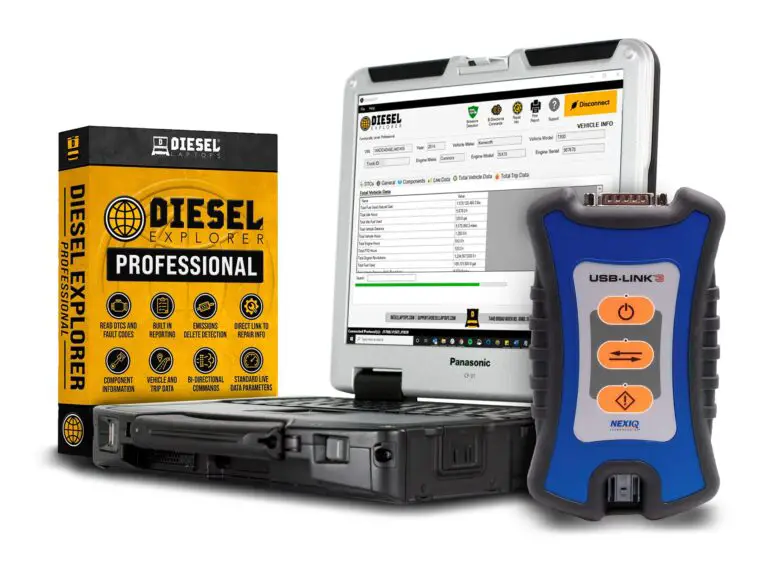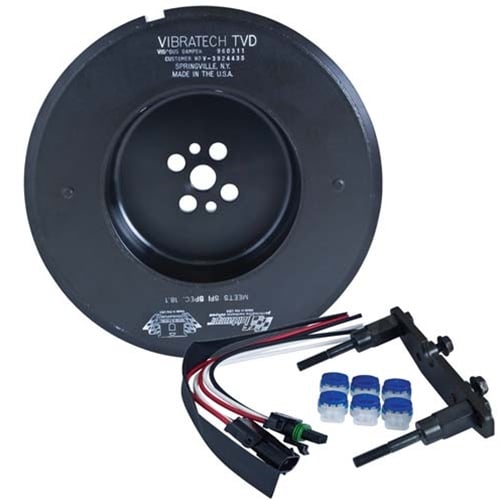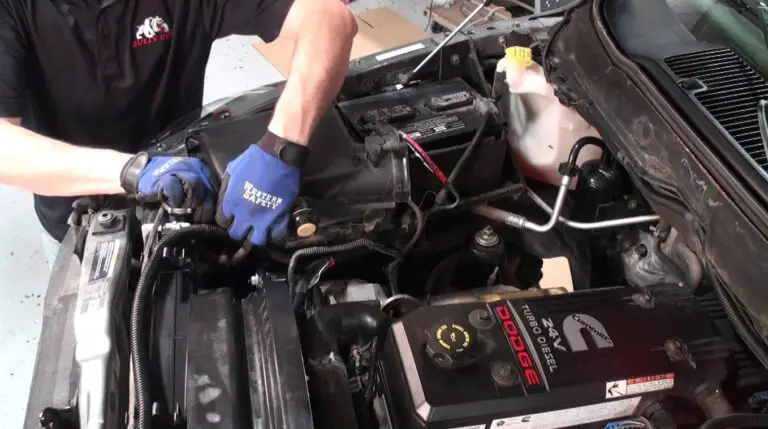6.7 Cummins Coolant Leak Passenger Side
A 6.7 Cummins coolant leak passenger side can result from damaged hoses, a faulty water pump, radiator issues, or cracked or loose connections. Identifying the leak’s source is crucial to ensure a successful repair.
Symptoms of coolant leaks may include overheating, a sweet smell, or visible puddling underneath the vehicle.
Diagnose the cause, select the right repair method, and then repair or replace the damaged components to fix the issue. Regular inspections and maintenance can help prevent future coolant leaks and keep your engine running smoothly.
Background on 6.7 Cummins engines
The 6.7 Cummins engine is a popular and powerful diesel engine found in various heavy-duty vehicles, including trucks and commercial vehicles. Known for its reliability and performance, the 6.7 Cummins engine is a go-to choice for many drivers and fleet managers.
Related Article: 6.7 Cummins Cooling System Diagram
Importance of addressing coolant leaks
Coolant leaks can be a serious issue for any engine, including the 6.7 Cummins. Ignoring a coolant leak can lead to overheating, engine damage, and costly repairs. Identifying and addressing coolant leaks promptly ensures the engine’s longevity and optimal performance.
Coolant leaks on the passenger side, in particular, can be challenging to diagnose and repair, making it crucial to follow a systematic approach
Coolant leak on 6.7 Cummins from Sinister delete kit FIX!
Identifying Coolant Leaks
Symptoms of coolant leaks in 6.7 Cummins engines
Identifying a coolant leak in a 6.7 Cummins engine early can save you time and money. Here are some common symptoms to watch out for:
- Overheating: Coolant leaks can cause the engine to overheat due to insufficient coolant levels, affecting the engine’s performance and potentially causing damage.
- Sweet smell: A coolant leak may emit a sweet smell, which comes from the ethylene glycol in the coolant.
- Low coolant levels: If you notice that the coolant level is consistently low, even after topping it off, a leak could be the cause.
- Visible puddling: Puddles of coolant under your vehicle, typically near the front passenger side, can indicate a coolant leak.
Locating leaks on the passenger side
Locating the source of a coolant leak on the passenger side of a 6.7 Cummins engine may require some investigation. Here are some steps to help you find the leak:
- Inspect hoses and connections: Check all hoses and connections on the passenger side for signs of wear or damage. Look for moisture, coolant residue, or swelling.
- Examine the water pump: Inspect the water pump for signs of leakage, such as coolant residue or a loose pulley.
- Check the radiator: Look for cracks or damaged fins on the radiator, as well as any leaking coolant around its edges.
- Pressure test: Perform a cooling system pressure test to pinpoint the source of the leak. This test involves using a pressure pump to pressurize the cooling system and observing where the coolant escapes.
Common Causes of Coolant Leaks
Damaged hoses
Hoses are a common cause of coolant leaks in 6.7 Cummins engines. Over time, hoses can become worn, cracked, or damaged due to constant exposure to heat, pressure, and vibration. Inspect all hoses on the passenger side for signs of wear, and replace any damaged hoses as needed.
Faulty water pump
The water pump is responsible for circulating coolant throughout the engine to regulate its temperature. A faulty water pump can lead to coolant leaks, particularly if the pump’s gasket or seal is damaged. Inspect the water pump for signs of leakage and replace it if necessary.
Radiator issues
The radiator helps to dissipate heat from the engine by transferring it to the coolant. Radiator issues, such as cracks or damaged fins, can cause coolant leaks. Inspect the radiator for any signs of damage and repair or replace it as needed.
Cracked or lose connections
Coolant leaks can also result from cracked or loose connections between various components in the cooling system. Inspect all connections on the passenger side, and tighten or replace any that appear to be compromised.
Step-by-Step Repair Process
Diagnosing the cause
Before attempting any repairs, it’s essential to diagnose the cause of the coolant leak. Follow these steps to identify the source of the leak:
- Check for symptoms of a coolant leak, such as overheating, sweet smell, low coolant levels, or visible puddling.
- Inspect hoses, connections, the water pump, and the radiator for signs of damage or leakage.
- Perform a cooling system pressure test to pinpoint the source of the leak.
Selecting the right repair method
Once the cause of the coolant leak has been identified, choose the appropriate repair method:
- If the leak is caused by damaged hoses, replace the hoses with new ones.
- If the water pump is the source of the leak, replace it with a new unit.
- If the radiator is damaged, repair or replace it as needed.
- If the leak is due to cracked or loose connections, tighten or replace them accordingly.
Repairing or replacing damaged components
Follow the manufacturer’s guidelines for repairing or replacing the damaged components:
- For hoses, ensure that the new hoses are the correct size and type for your 6.7 Cummins engine.
- When replacing the water pump, use a new gasket and seal to prevent future leaks.
- If repairing or replacing the radiator, ensure that it is properly seated and connected to the cooling system.
- For connections, use high-quality replacement parts and tighten them to the manufacturer’s specifications.
Ensuring a successful repair
After completing the repair, it’s essential to verify its success:
- Refill the coolant system with the appropriate coolant mixture.
- Start the engine and allow it to reach operating temperature.
- Check for any signs of coolant leaks or overheating.
- Perform another cooling system pressure test to confirm that the leak has been resolved.
Preventative Maintenance
To prevent future coolant leaks and keep your 6.7 Cummins engine running smoothly, follow these preventative maintenance tips:
Regular inspections
Perform regular inspections of your engine’s cooling system, paying close attention to hoses, connections, the water pump, and the radiator. Look for signs of wear, damage, or leaks. Address any issues as soon as they’re detected to prevent more significant problems.
Replacing worn components
Replace worn or damaged components before they cause coolant leaks. By being proactive, you can avoid costly repairs and downtime. Always use high-quality replacement parts that meet the manufacturer’s specifications.
Maintaining optimal coolant levels
Monitor your engine’s coolant levels and top off as needed. Use a coolant mixture that meets the manufacturer’s recommendations. Regularly checking and maintaining coolant levels can help prevent overheating and ensure that your engine operates at peak performance.
Additional Tips and Information
Using the correct coolant
When refilling the coolant in your 6.7 Cummins engine, it’s crucial to use the correct coolant type recommended by the manufacturer. Mixing coolants with different formulations can lead to compatibility issues, resulting in reduced performance and potential damage to the cooling system.
Flushing the cooling system
Periodically flushing your engine’s cooling system can help remove debris and contaminants that may contribute to coolant leaks. Consult your vehicle’s owner’s manual for the recommended interval and procedure for flushing the cooling system.
Monitoring engine temperature
Keep an eye on your engine’s temperature gauge while driving to ensure that it remains within the normal operating range. If the temperature begins to rise unexpectedly, pull over and investigate the issue immediately to prevent potential engine damage.
Seeking professional assistance
If you’re unsure about diagnosing or repairing a coolant leak in your 6.7 Cummins engine, it’s always best to consult a professional mechanic. They have the necessary tools, expertise, and experience to address the issue efficiently and safely.
By following the steps, tips, and information provided in this article, you can effectively manage coolant leaks and maintain the overall health of your 6.7 Cummins engine. Regular maintenance and proactive care will ensure optimal performance and longevity for your vehicle.

Credit: www.cumminsforum.com
Frequently Asked Questions
What are the common symptoms of a coolant leak in a 6.7 Cummins engine?
Common symptoms include overheating, a sweet smell, low coolant levels, and visible puddling of coolant under the vehicle, typically near the front passenger side.
How can I locate the source of a coolant leak on the passenger side?
Inspect hoses, connections, the water pump, and the radiator for signs of damage or leakage. You can also perform a cooling system pressure test to pinpoint the source of the leak.
What are the typical causes of coolant leaks in 6.7 Cummins engines?
Coolant leaks can be caused by damaged hoses, a faulty water pump, radiator issues, or cracked or loose connections in the cooling system.
How often should I inspect my 6.7 Cummins engine’s cooling system?
It is recommended to inspect your engine’s cooling system regularly, at least every few months, or according to the manufacturer’s maintenance schedule.
Can I mix different types of coolant in my 6.7 Cummins engine?
No, it’s crucial to use the correct coolant type recommended by the manufacturer. Mixing different coolant formulations can lead to compatibility issues, reduced performance, and potential damage to the cooling system.
Cummins 6.7 Coolant Leak
Conclusion
Recap of the repair process
Addressing a 6.7 Cummins coolant leak on the passenger side involves identifying the leak’s source, diagnosing the cause, selecting the right repair method, and repairing or replacing damaged components. Ensuring a successful repair and performing regular preventative maintenance can help prevent future leaks and keep your engine running smoothly.
Importance of addressing coolant leaks promptly
Ignoring a coolant leak can lead to overheating, engine damage, and costly repairs. Identifying and addressing coolant leaks promptly ensures the engine’s longevity and optimal performance. By following the comprehensive guide outlined in this article, you can tackle coolant leaks with confidence and keep your 6.7 Cummins engine in top condition.
As the entire outline has been expanded in previous responses, I will provide some additional tips and information related to the 6.7 Cummins engine coolant leaks and maintenance.
Read Also:


